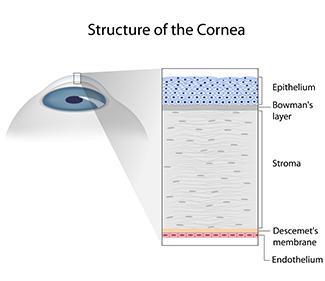Corneal Transplants
What are corneal transplants?
A corneal transplant is a surgery to replace your cornea. Your cornea is the front layer of clear tissue covering your eye. If the tissue is diseased or damaged, a corneal transplant may help you see more clearly and alleviate symptoms like eye pain or cloudiness in your vision. You might need a corneal transplant if you have:
- A traumatic eye injury
- A severe eye infection
- Damage from a previous eye surgery
- Fuchs’ dystrophy
- Keratoconus
- Keratitis
During your corneal transplant, your surgeon replaces your damaged or diseased cornea with cornea tissue from a donor. It has the highest success rate of any organ transplant . A corneal transplant can restore your vision and eye health as long as the rest of your eye is healthy.
What are my options for corneal transplants?
At VIP Laser Eye Center, the team provides several options for corneal transplants. During your preoperative consultation, the team helps you learn about each of your options and select one that’s a good fit. Your options include:
Penetrating Keratoplasty (PKP) (or full-thickness corneal transplant)
During a full-thickness corneal transplant, your surgeon cuts a circular disk of diseased corneal tissue from your eye. He or she then replace it with a disk of donor corneal tissue cut to the same size. Your surgeon will carefully stitch it in place with very fine sutures and gently removes them at a later date.
Descemet’s Stripping Automated Endothelial Keratoplasty (DSAEK)
DSAEK is a type of partial-thickness corneal transplant. It treats corneal damage on the inside surface of your cornea.
Descemet’s Membrane Endothelial Keratoplasty (DMEK)
DMEK also only treats corneal damage on the inside surface of the cornea, but it replaces a thinner portion than DSAEK. This is a more technically difficult surgery compared to DSAEK, however can give slightly better visual outcomes and decrease the chance of rejection.
Anterior Lamellar Keratoplasty (ALK)
ALK is performed when there is corneal disease that only affects the outer layers of the cornea (i.e. epithelium and stroma). During this procedure, the outer layers of the cornea are dissected from the rest of the cornea and replaced with comparable donor cornea.
What should I expect during my corneal transplant surgery?
Before your surgery, experts screen your donor tissue to make sure it’s clear of disease and in great condition.
On the day of your surgery, you will discuss your options for anesthesia with your anesthesiologist . Anesthesia helps keep you comfortable during your procedure. In most cases, they use local anesthesia only to numb your eye. In rare cases,the anesthesiologist may recommend general anesthesia to put you to sleep.
During the surgery, the team monitors your heart rate and blood pressure to make sure you’re tolerating it well. The surgery time can vary, but usually is between 1-2 hours. After the surgery, your eye will likely be patched. You will also be given specific instructions when leaving the surgery center. This may include eye drops or strict orders for laying on your back if you have a DSAEK or DMEK. You will see one of our doctors the following day in the office.
Each year, over 47,000 people in the United States have corneal transplants for better vision and less eye pain associated with corneal damage. At VIP Laser Eye Center in Palm Beach Gardens, Stuart, and Port St. Lucie, Florida, Corneal surgeon Clifford Salinger, MD and our team provide full-thickness corneal transplants and several options for partial transplants.


